Zellij
Moroccan Zellige: A Masterpiece of Authentic Moroccan Art
Moroccan Zellige is one of the most prominent traditional arts that embodies the ingenuity and high craftsmanship of Moroccan artisans. This refined art is a symbol of Moroccan identity and a cultural heritage reflecting Morocco’s deep history and vibrant culture. Moroccan Zellige stands out with its unique geometric designs and vibrant colors, making it one of the most famous and distinguished traditional crafts worldwide.
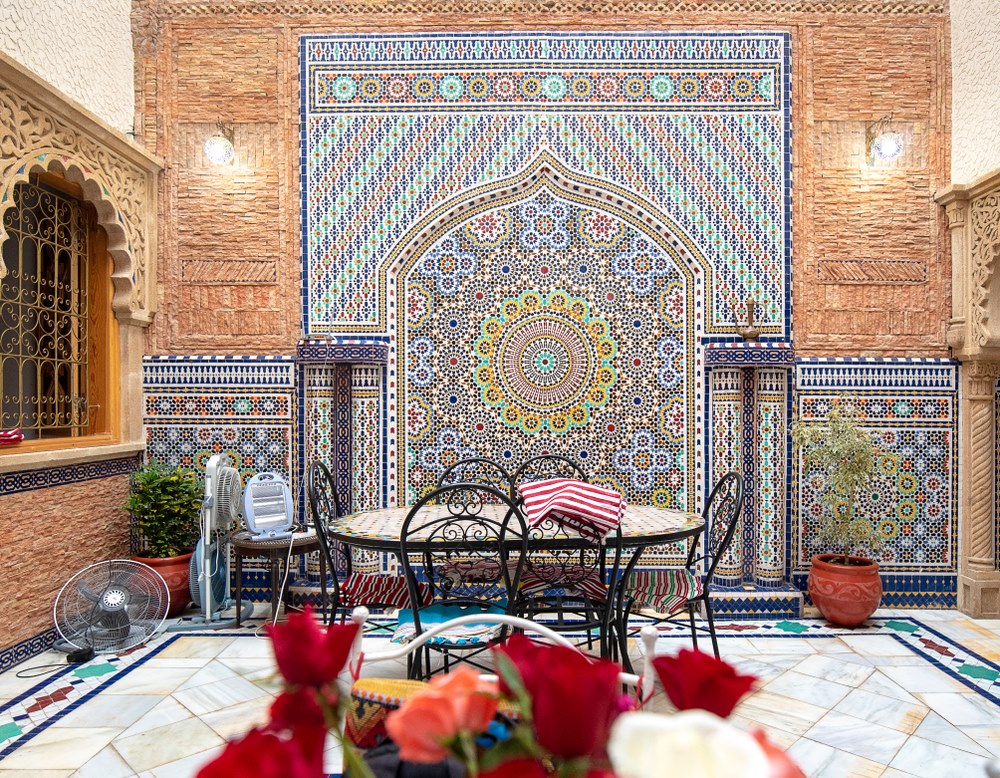
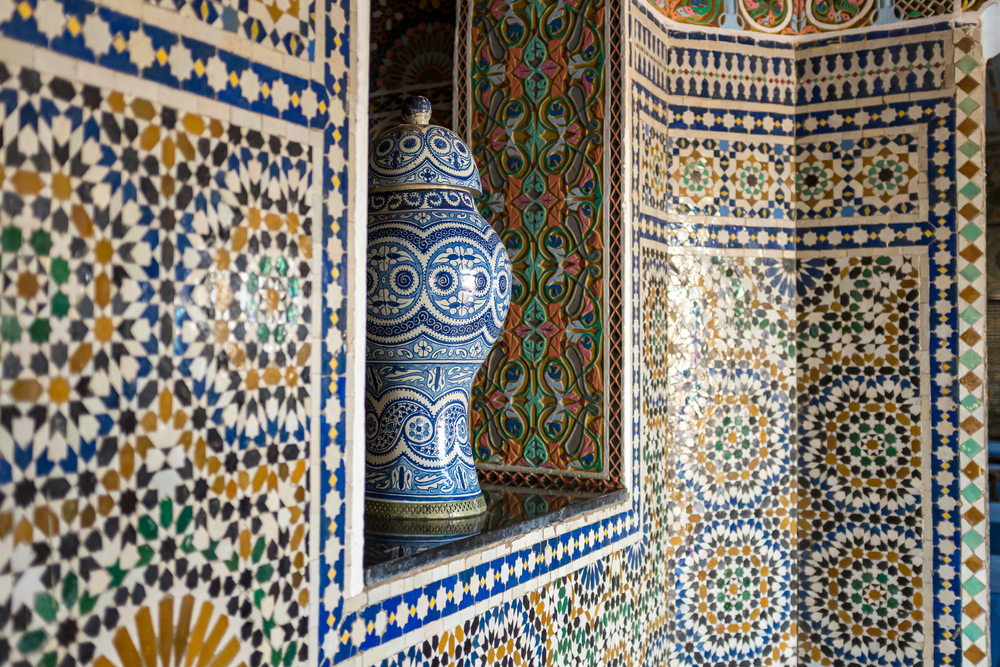
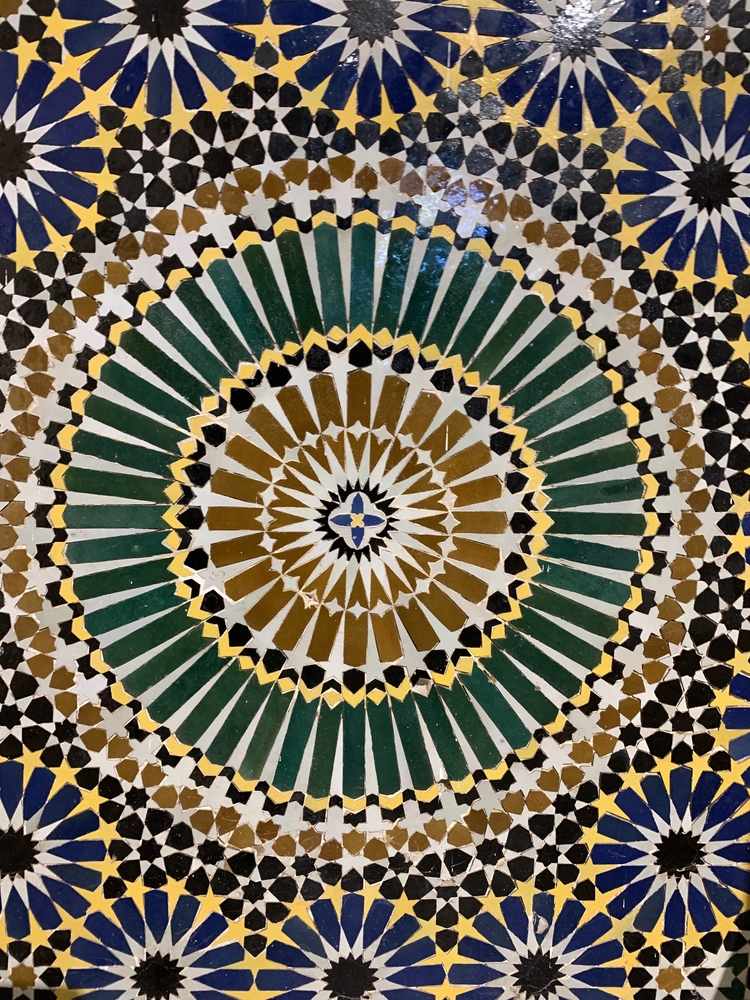
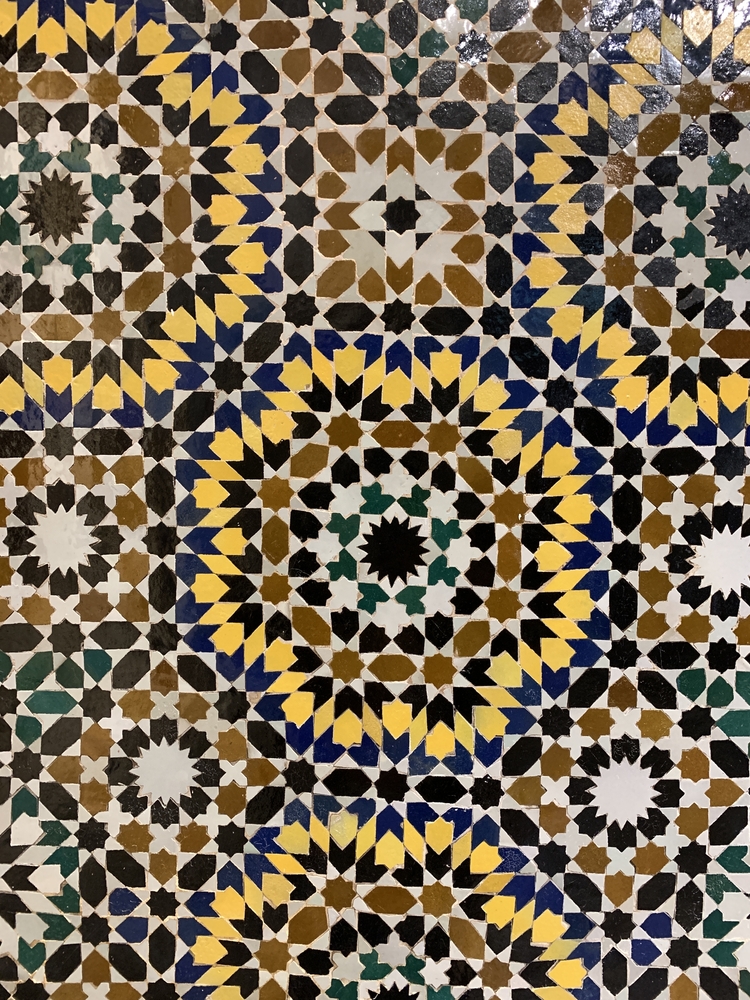
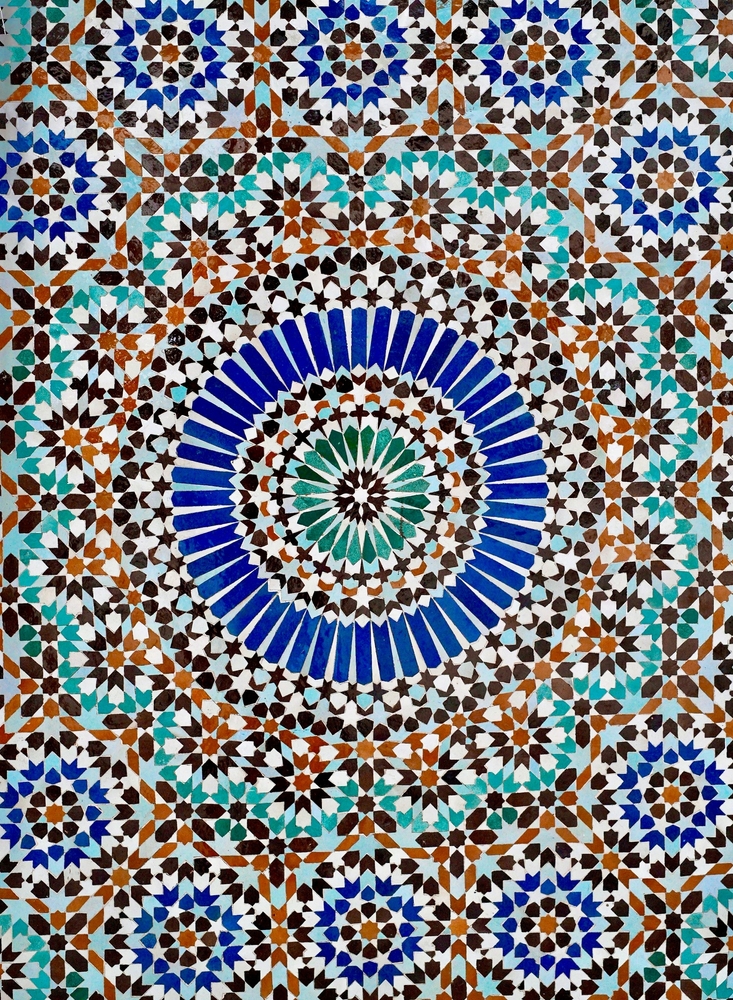
What is Zellige?
Zellige is a type of mosaic made from small pieces of glazed ceramic, meticulously handcrafted and arranged to create stunning geometric patterns. It is used to decorate mosques, palaces, fountains, pools, and both interior and exterior walls of traditional buildings. Zellige is a symbol of beauty and creativity that mirrors the rich Moroccan culture.
The Origin of Zellige: Uniquely Moroccan
There is no debate that Zellige is an authentic Moroccan art that originated and developed in Morocco before spreading to Andalusia and other regions. The roots of Zellige trace back to the early Islamic era in Morocco, where it was first used to adorn mosques and palaces. Historical studies confirm that Morocco is the true cradle of this art, with Moroccan artisans excelling in refining its techniques and creating innovative geometric patterns that later inspired many cultures.
Zellige in Andalusia
When Moroccan artists and craftsmen reached Andalusia during the Islamic rule, they brought with them the techniques and styles of Zellige. It became widespread in Andalusia, especially in iconic buildings like the Alhambra Palace in Granada. While Andalusia experienced a flourishing of this art, its original roots and invention remain distinctly Moroccan.
The Stages of Making Moroccan Zellige
1. Selection of Raw Materials
The production of Zellige begins with natural clay extracted from Moroccan lands. The clay is carefully processed to make it pliable for shaping.
2. Shaping and Cutting
Once processed, the clay is shaped into flat molds and then cut into small geometric shapes such as triangles, squares, and stars.
3. Drying and Glazing
The clay pieces are left to dry under the sun before being glazed with vibrant colors using glassy materials.
4. Firing
The glazed pieces are placed in kilns at high temperatures to fix the colors and increase their durability.
5. Assembly
The small pieces are meticulously assembled by hand according to a specific pattern on smooth surfaces, requiring great precision and patience.
Characteristics of Moroccan Zellige
- Geometric Designs: Zellige relies on complex geometric patterns where symmetrical shapes intricately intertwine.
- Vivid Colors: Moroccan Zellige features a variety of colors such as blue, green, red, and yellow.
- Versatility: Zellige is used in decorating mosques, palaces, fountains, and even modern homes.
- High Quality: Known for its durability, Moroccan Zellige is resistant to the wear of time.
Famous Locations for Moroccan Zellige
Fez: The Cradle of Zellige
Fez is considered Morocco’s spiritual capital and the birthplace of Zellige. The artisans of Fez are renowned for their mastery of this art, with its ancient schools like Al-Attarine Madrasa and Al-Qarawiyyin Mosque serving as remarkable examples of Zellige craftsmanship.
Marrakech
In Marrakech, Zellige is widely used to decorate palaces and traditional riads, such as Bahia Palace and Majorelle Gardens.
Meknes
The city of Meknes showcases the beauty of Zellige in its historical gates and mosques, such as Bab Mansour.
The Cultural Importance of Zellige in Morocco
A Symbol of National IdentityZellige represents Moroccan identity, reflecting the skills of artisans and the culture of Moroccan people.Economic ContributionZellige plays a vital role in the local economy by providing jobs for artisans and boosting tourism.World HeritageDue to its authenticity and beauty, Moroccan Zellige has been included in UNESCO’s list of Intangible Cultural Heritage.
Zellige in Modern Times
Despite being a traditional art, Moroccan Zellige has retained its place in contemporary architecture. Engineers and designers use Zellige to create modern interior and exterior designs that add a touch of authenticity and beauty.
Conclusion
Moroccan Zellige is more than just a decorative art; it is an expression of creativity and authentic Moroccan culture. With its deep roots in Morocco and its spread worldwide, Zellige remains a living testament to the genius of Moroccan artisans and their unparalleled heritage.
Visit our website Maghreb.wiki for more insights into Morocco’s rich heritage.